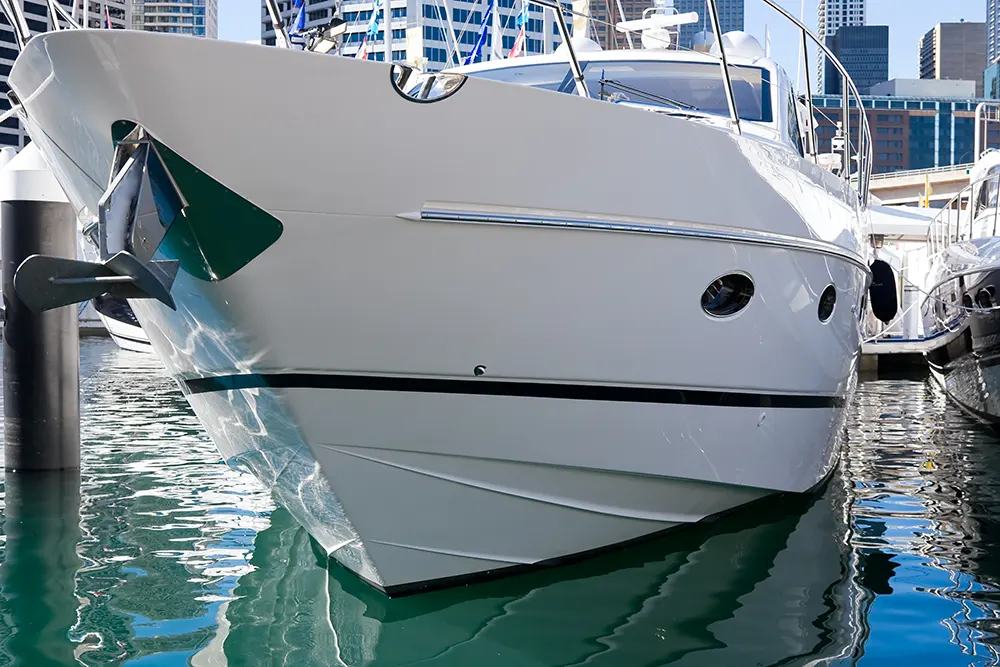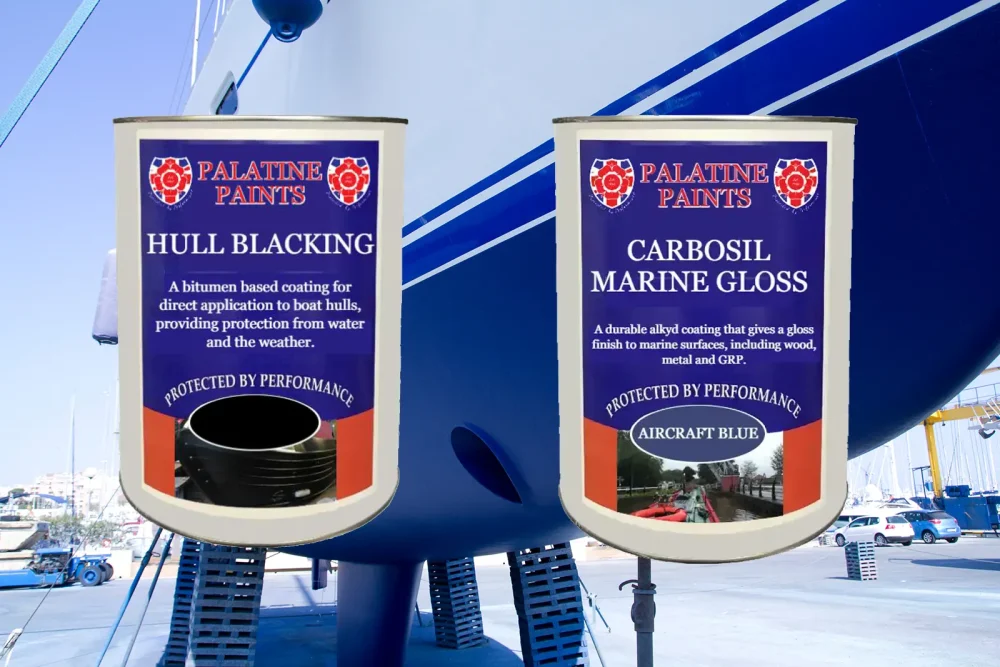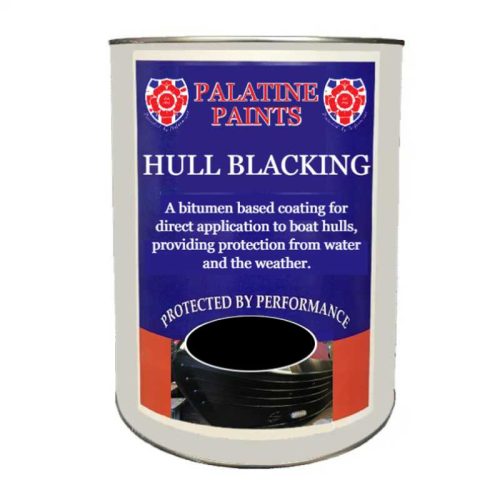Priming and Protecting
Understanding Hull Blacking: The Key to Enhanced Boat Performance
As an avid boater, I understand the importance of maintaining the best possible performance of my craft. One aspect that is often overlooked in this pursuit is hull blacking. It’s something that, in my experience, many boat owners are unaware of or underestimate its importance. Hull blacking is an essential part of boat maintenance, ensuring the longevity and optimal performance of the vessel.
Hull blacking is not a recent development; it’s been a part of boat maintenance for centuries.
The process involves applying a protective coating to the hull of a boat, which helps prevent damage and erosion caused by water and aquatic organisms. The term ‘blacking’ comes from the traditional use of black bitumen-based paints, although the specific materials and techniques have evolved.
Whether you’re a seasoned sailor or a weekend hobbyist, understanding hull blacking and its benefits can make a significant difference to your boating experience.
In the following sections, we’ll delve deeper into what hull blacking is, why it’s important, the different types available, and how it can improve your boat’s performance.
What is hull blacking?
Hull blacking is essentially a protective measure, applying a coating to the hull of a boat to protect it from water and the organisms that inhabit it. While the name might suggest the use of black paint, the reality is that a variety of materials can be used for this purpose.
Traditionally, black bitumen-based paints were used for hull blacking. They provided an effective barrier against water but had the disadvantage of being relatively short-lived. This meant that boats needed to be re-blacked frequently to maintain the protective layer.
In recent years, there has been a shift towards modern materials that offer greater longevity and protection. These include epoxy resins and high-performance paints, which can provide years of protection with a single application. Regardless of the specific materials used, the primary goal of hull blacking is to protect the boat from water damage and improve its performance.
Why is hull blacking important for boat performance?
You may be wondering why hull blacking is so critical for boat performance. The answer lies in the nature of water and the organisms that live in it. Water can be incredibly destructive, especially to materials like wood and metal, which are commonly used in boat construction.
Without a protective layer, the hull of a boat is at the mercy of the water. It can suffer from erosion, corrosion, and the growth of aquatic organisms, all of which can negatively impact the boat’s performance. A boat with a damaged or dirty hull will be slower, less maneuverable, and consume more fuel than one with a clean, well-protected hull.
Furthermore, the growth of aquatic organisms on the hull, a phenomenon known as bio-fouling, can significantly reduce a boat’s speed and fuel efficiency. By providing a protective barrier, hull blacking helps prevent bio-fouling, ensuring your boat performs at its best.
The process of boat hull blacking
The process of hull blacking is relatively straightforward, but it does require some preparation and the right materials. It typically involves the following steps:
First, the boat needs to be removed from the water and thoroughly cleaned. This usually involves pressure washing the hull to remove any dirt, algae, or other aquatic organisms. Once clean, the hull should be inspected for any signs of damage or wear, which should be repaired before proceeding with the blacking.
Next, the hull is prepared for blacking. This can involve sanding the surface to create a rough texture, which helps the blacking material adhere better. Once the hull is prepared, the blacking material is applied. This can be done using brushes, rollers, or sprayers, depending on the specific material and the size of the boat.
Finally, once the blacking material has been applied, it needs to be left to dry and cure. This can take anywhere from a few hours to several days, depending on the specific material and the environmental conditions. Once cured, the boat can be returned to the water, with its hull now protected and ready to deliver optimal performance.

Different types of hull blacking
There are several different types of hull blacking available, each with its advantages and drawbacks. The most common types include:
- Bitumen-based blacking: This is the traditional type of hull blacking, using black bitumen-based paint. It’s relatively cheap and easy to apply, but it doesn’t last as long as some other types.
- Epoxy blacking: This type of blacking uses epoxy resins to create a durable, waterproof coating. It’s more expensive than bitumen-based blacking, but it provides a longer-lasting protection.
- Copper-based blacking: This type of blacking uses copper particles suspended in a paint or resin. It provides excellent protection against aquatic organisms and can last for many years.
- High-performance paint: These are specially formulated paints that provide a high level of protection and can last for several years. They’re typically more expensive than other types of blacking, but they offer the best performance.
Tips for maintaining blacked hulls
Once your boat’s hull has been blacked, it’s important to maintain it properly to ensure it continues to provide the best possible protection. Here are a few tips for maintaining a blacked hull:
- Regular inspections: Regularly inspect your boat’s hull for any signs of damage or wear. If you notice any areas where the blacking is thin or missing, it’s important to reapply it as soon as possible.
- Regular cleaning: Keep your boat’s hull clean to prevent the growth of aquatic organisms. This can be done using a soft brush and environmentally friendly cleaning products.
- Avoid harsh chemicals: Avoid using harsh chemicals on your boat’s hull, as these can damage the blacking and reduce its effectiveness.
- Regular re-blacking: Even with the best maintenance, all types of hull blacking will eventually wear out and need to be reapplied. How often this needs to be done will depend on the specific type of blacking and the conditions your boat is used in.
The cost and time involved in hull blacking
The cost and time involved in hull blacking can vary widely, depending on the size of your boat, the type of blacking you choose, and whether you do it yourself or hire a professional.
As a rough guide, you can expect to pay anywhere from a few hundred to several thousand pounds for professional hull blacking. Doing it yourself can be significantly cheaper, but it does require time, effort, and the right equipment.
In terms of time, hull blacking can take anywhere from a few hours to several days. This includes the time needed to prepare the hull, apply the blacking, and allow it to dry and cure. It’s important to factor this time into your boating plans, as your boat will need to be out of the water for the duration.
Professional services for hull blacking
If you’re not comfortable doing the hull blacking yourself, or you simply don’t have the time, there are many professional services available that can do it for you. These services typically include the cleaning and preparation of the hull, the application of the blacking, and any necessary repairs.
When choosing a professional service, it’s important to do your research. Look for a company with a good reputation and a track record of delivering high-quality work. Ask for references or testimonials from previous customers, and make sure they’re fully insured.
Case study: Improved boat performance through hull blacking
To illustrate the benefits of hull blacking, let’s look at a case study. In this case, a boat owner noticed that his boat was becoming increasingly sluggish and less manoeuvrable. Despite regular maintenance and engine checks, the performance continued to decline.
The owner decided to have the hull blacked, hoping that this would improve the boat’s performance. After having the hull cleaned, repaired, and coated with a high-performance blacking material, the boat was put back in the water.
The improvement was immediate. The boat was faster, more manoeuvrable, and consumed less fuel. The owner was delighted with the results and noted that the cost of the hull blacking was more than offset by the savings in fuel and the improved boating experience.
Recommended products
If you’ve taken everything onboard (No pun intended!), our very own products are perfect for the job in hand.
Conclusion: The key role of hull blacking in enhanced boat performance
In conclusion, hull blacking plays a vital role in enhancing boat performance. By protecting the hull from water damage and the growth of aquatic organisms, it helps ensure that your boat performs at its best. Whether you choose to do it yourself or hire a professional, investing in hull blacking can make a significant difference to your boating experience.
As we’ve seen, there are several different types of hull blacking available, each with its own advantages and drawbacks. It’s important to choose the right type for your boat and to maintain it properly to ensure it continues to provide the best possible protection.
In my experience, hull blacking is one of the best investments a boat owner can make. It not only helps improve performance but also extends the life of the boat and reduces maintenance costs. So, if you want to get the most from your boating experience, I highly recommend considering hull blacking.
Contacting us is easy!
Email: [email protected]
Call Us: 01942 884 122
Contact form: https://www.palatinepaints.co.uk/contact-us
Live Chat Service: Press the small blue icon at the bottom left of your screen.



